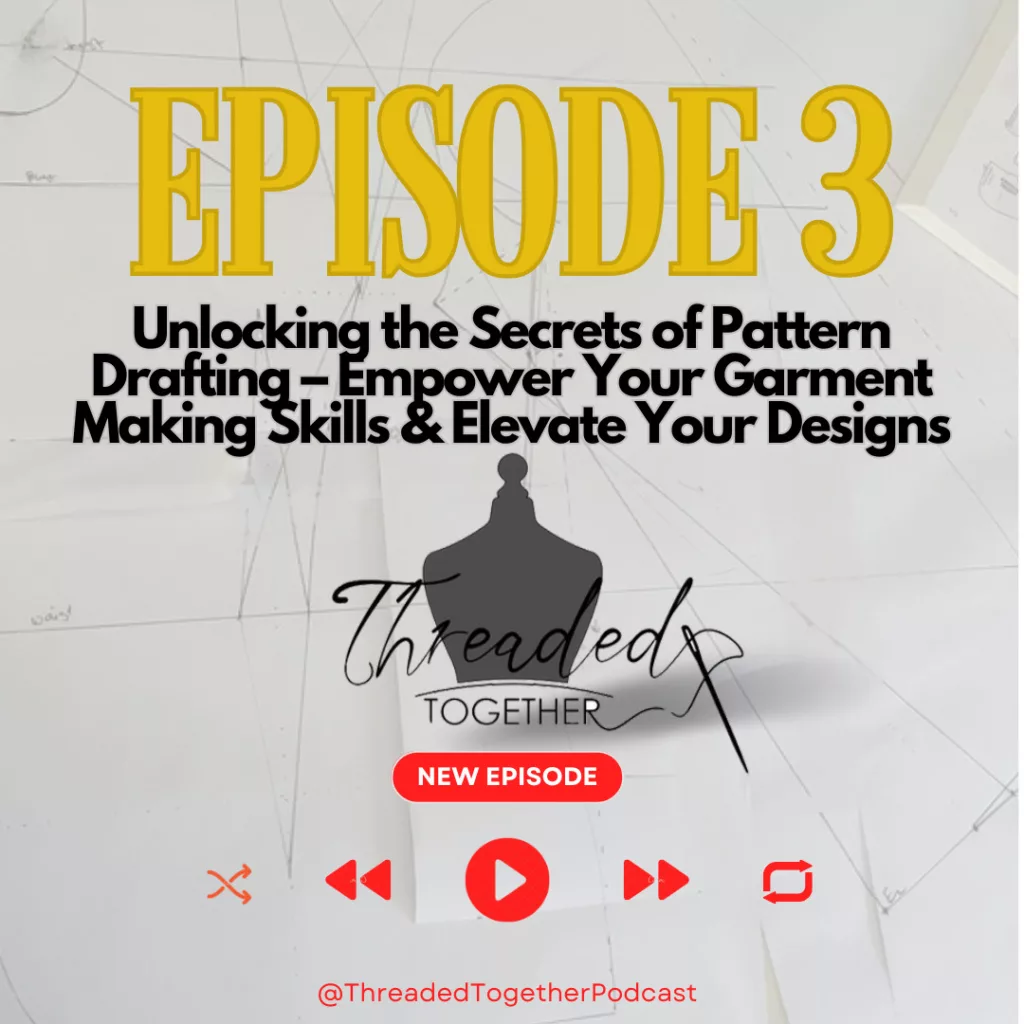
In episode 3 of Threaded Together podcast Tracy and Rebecca tackle the fascinating and intricate world of pattern drafting—a fundamental aspect of garment making that can open up a universe of possibilities for home sewers. Rooted in the reasons you may want to learn pattern making, be it transforming an existing garment, replicating runway styles, or simply unlocking your creative potential, this episode is tailored just for you. Tracy and Rebecca divulge their favorite resources for mastering pattern cutting, discussing various approaches to getting started, and sharing tips on applying the basics while adapting patterns—perfect for those eager to experiment with their own designs.
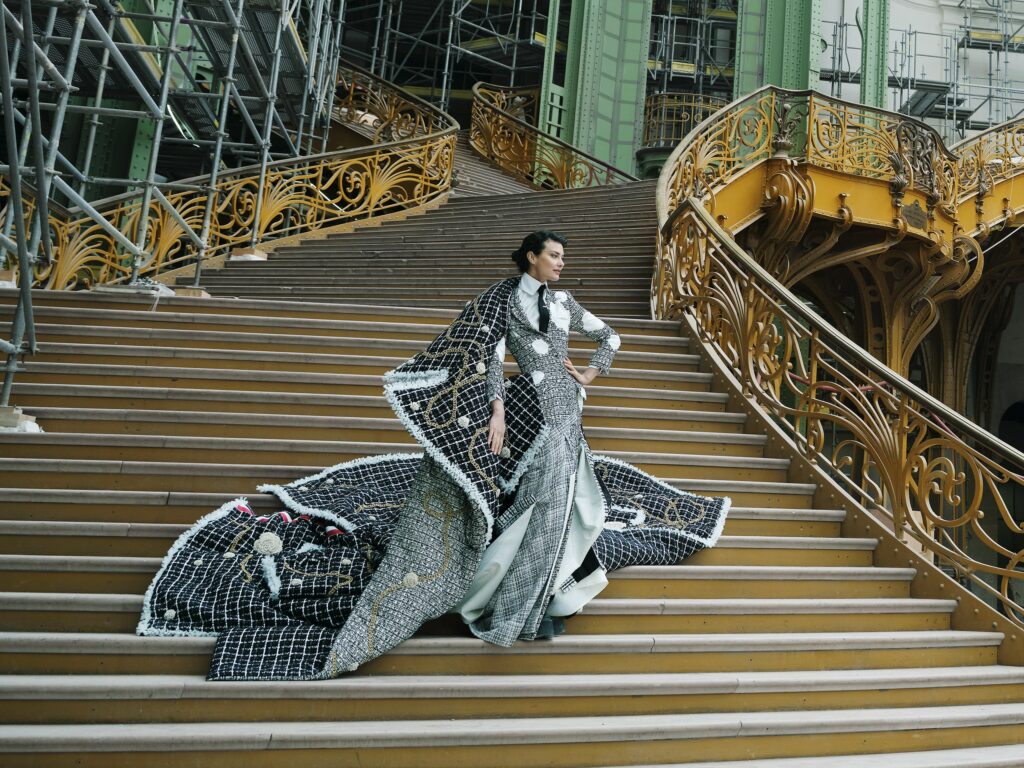
The Met Gala 2023:
As the First Monday in May draws near, the hosts also delve into the captivating realm of high fashion in pop culture, highlighting one of the most prominent and anticipated events of the year. Every year the Met chooses a theme for this year and this year it’s a fashion lover’s dream as a tribute to the late Karl Lagerfeld, former designer for Chloe, Fendi, and of course most famously, Chanel. In hommage to Karl’s legacy, Anna Wintour the editor in chief of American Vogue commissioned different designers to create garments in tribute to the late designer and then published a behind the scenes video of their creation and the meaning behind them, you can see the video here.
Our favourite tribute garments were of course the Christopher John Rogers – Fendi inspired pink organza dress and the Thome Browne tweed suited separates set that was partially deconstructed and on top had a portion of a lapel from a Chanel coat blown up to be the size of a cape with a train.
Pattern Cutting Background
Our main topic is pattern cutting 101, where we started by discussing some of the visible of pattern cutting vs draping in high fashion. Some of the famous drapers include Madame Vionnet, Halston and Allexander Mcqueen who even constructing tailored pieces without having a pattern handy.
Some designers who are well known for sketching designs and then using pattern cutters to get to the final design include Rei Kowakubo from Commes de Garcon, Karl Lagerfeld formerly of Chanel. An interesting example of both techniques would be Laura Kim & Fernando Garcia of Oscar de la Renta & Montse.
Our favorite resources for creating your own pattern block:
- Pattern cutting – Dennic Chunman Lo
- Metric Pattern cutting for women’s wear – winifred Aldrich
- Patternmaking for Fashion Design – Helen Joseph Armstrong
- Fashion Patternmaking Techniques books – Antonio Donnano.
- The Shapes of Fabric has a comprehensive tutorial
Tools for Pattern Making:
- Paper
- Patternmaster
- measuring tape
- adhesive tape
- Pencils – a mechanical pencil will help you always get a nice sharp line.Coloured pencils or fineliner pens are also helpful for marking up pattern changes & pattern information.
- A tracing wheel – to trace a line onto another piece of paper
Obviously you’ll need decent scissors, pins, fabric to toile… too
Key Terms for Pattern Making:
Grainline, how you lay your pattern along the grainline pattern will affect the appearance of the garment and how it hangs, it is a really important marker to have on every pattern piece.
Trueing, to make sure that things match up. You need to make sure that your seams are the same length, that your dart legs are the same length, that lines meet up smoothly and (unless intended otherwise) at right angles.
Balance lines – you’ll mark horizontal balance lines on the garment, e.g the waist & the hip that represent the crosswise grain & help align pattern pieces.
Balance points are used throughout the pattern to help adjoin pieces. For example a notch on the side back, to align with the dart on the side front.
Blending this is the phrase given to making a smooth curve out angular lines for a smooth transition from one point to another.
Dart manipulation is taking a dart that already exists and manipulating it, this could be:
- To move it
- Eliminate it
- Split it into multiple
- Make it into tucks/pleats/flares/gathers
The shapes of fabrics has some great visuals of this: https://www.theshapesoffabric.com/2018/02/28/dart-manipulation-basics/
Slash & spread is also a great technique for adding extra fullness or volume to a pattern piece. Draw straight lines equally spaced along your traced pattern piece, cut (or slash) along them & spread them out to make your new piece. Depending on the piece, you might want to cut to, but, not through your seam line (for example a sleeve, you might might want to preserve the sleeve head), or you might want to cut all the way through (for example added ruffles on a piece you are going to gather)
Top 3 Pattern Resources from Tracy
- Winnifred Aldridge- Metric Metric Pattern Cutting for Women’s Wear. Its quite a technical book – so can be overwhelming – its really geared towards university students, but, it covers soooo much. From drafting your own block, and then through skirts/sleeves, jackets, dresses, collars etc. Its really instructive in terms of how to take a pattern block & make it into different pattern pieces.
- Pattern cutting by Dennic Chunman Lo, is a really comprehensive book, everything is broken down into easy to understand steps, with brilliant pictures & videos to help you along the way. It has less examples of patterns to create with your block than Winifred aldrich, but, its much easier to follow!
- Patternmaking for Fashion Design – Helen Armstrong – this book is more expensive than the other two, but has sooo many examples of patterns in it. Its beautifully illustrated, and some of the design styles are more ‘modern’ than Winifred Aldrich.
Top 3 Pattern Resources from Rebecca
- Antonio Donnano – Fashion Patternmaking Techniques: these books can start from basic blocks or from partially constructed garments to either give you a leg up on getting started or to elevate your drafting skills. For advanced pattern drafting check out the couture series.
- Etsy Vintage patterns: start with an idea and see what the pattern looks like in person, simple as that.
- David Page Coffin – this trouser and shirt making series will help you to fill in the gaps once you have your main blocks constructed. Facings, pockets, finishings, all of these things are not included in a basic pattern drafting book but they make or break the final pattern.
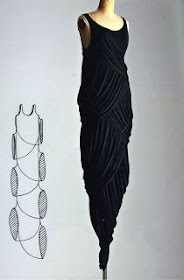
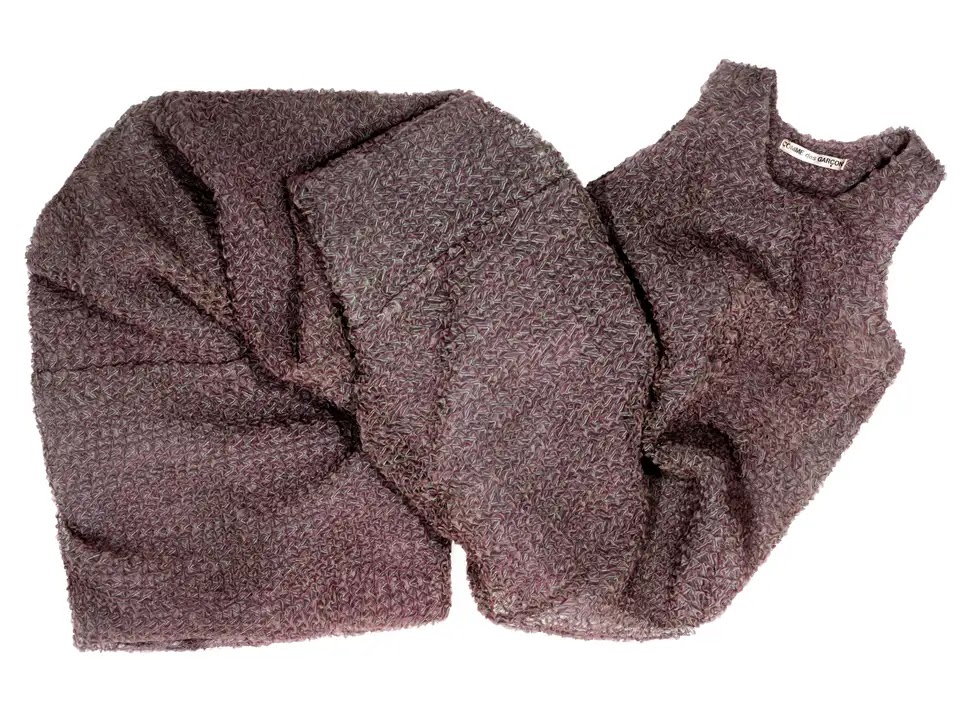
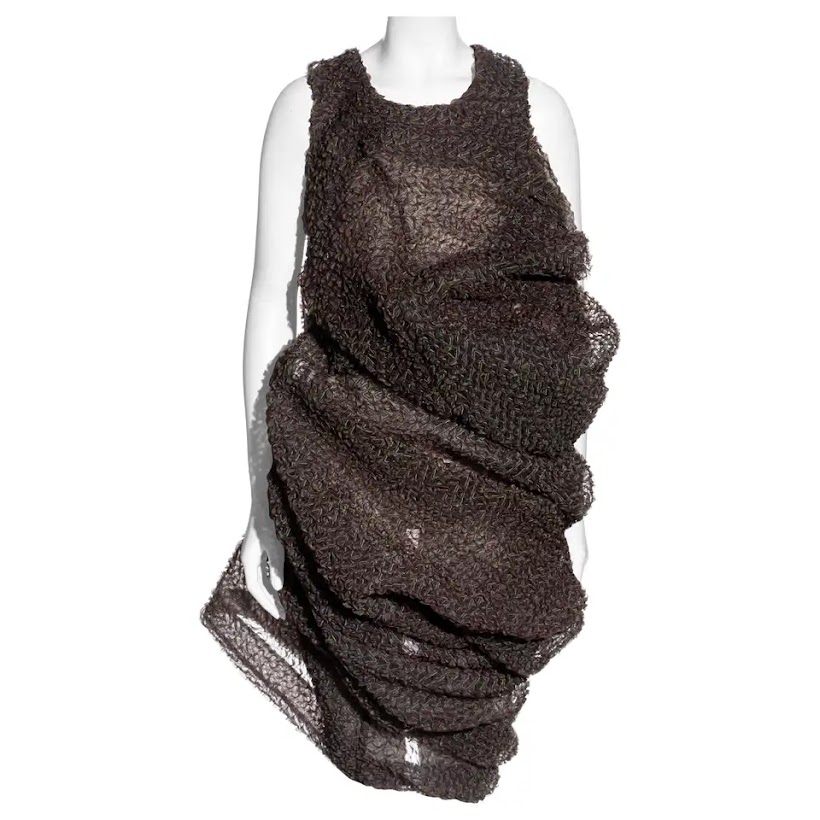
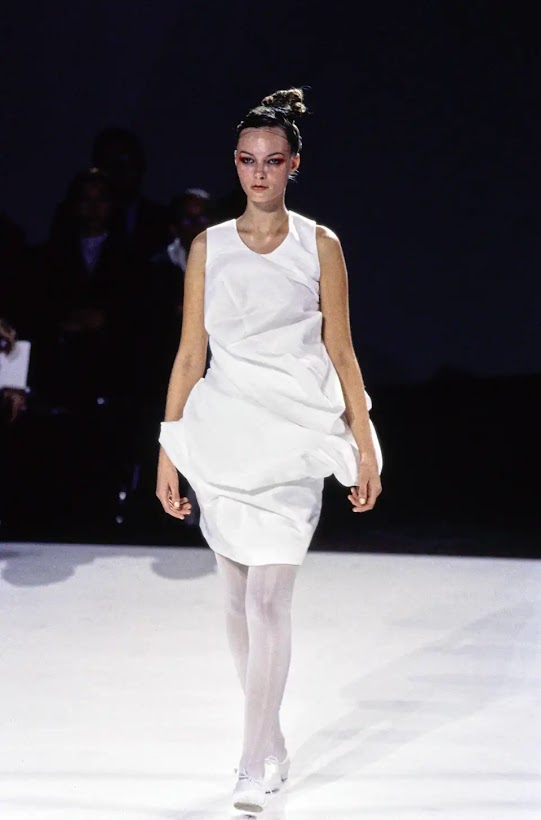
L to R, Top to Bottom: Isabel Toledo, Commes de Garcon “Dress Meets Body, Body Meets Dress”
And some advanced/experimental techniques that are so inspiring
- Julian Roberts Subtraction Cutting: https://www.youtube.com/watch?v=eFiEIKYef8w
- TR Cutting or Transformational Reconstruction by Shingo Sato which is a form of origami pattern cutting – its truly incredible & recommend looking it up on Instagram
- And of course The pattern magic books by Tomoko Nakamichi
